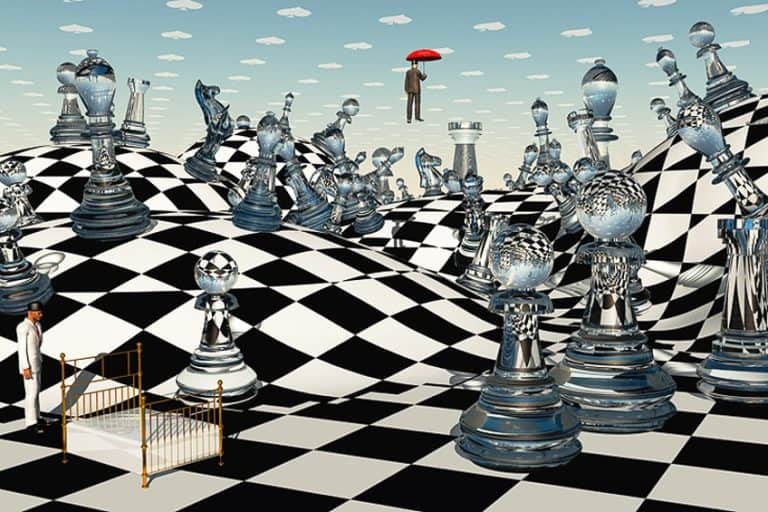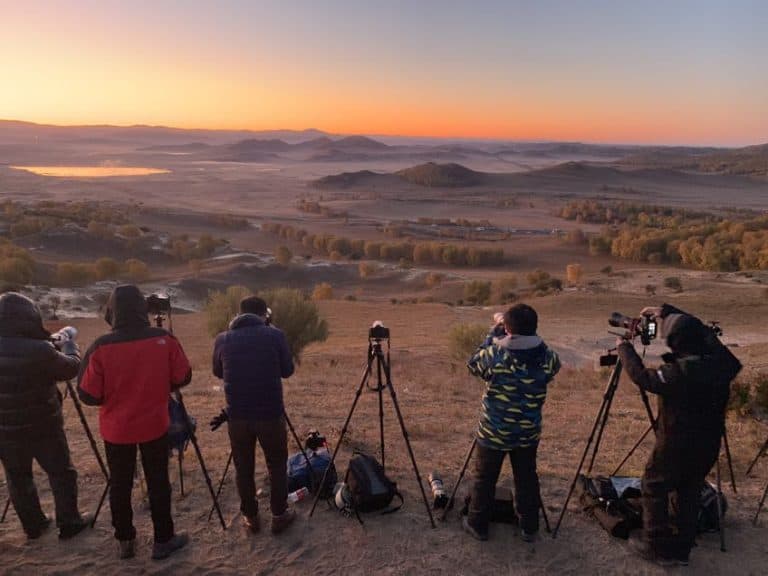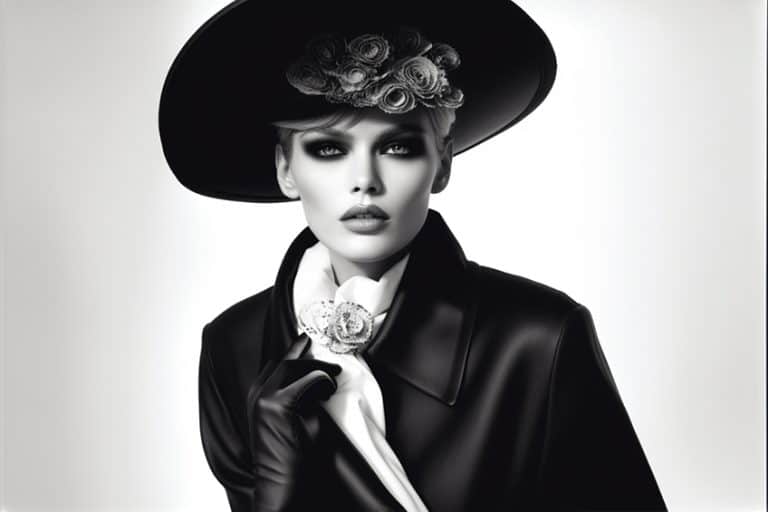Color in Photography – The Palette of Pixels
In the realm of visual artistry, color in photography stands as a resplendent testament to the magic of human perception. Many see this art form as a space where reality intertwines with imagination, and where moments are instilled with profound emotions through the masterful use of hues and tones. At the heart of this enchanting craft lies the primary colors in photography – red, blue, and green – which make up the elemental building blocks of a painter’s palette captured through the lens. These primary colors serve as the key to unlocking the full spectrum of human expression, allowing photographers to breathe life and narrative into their images with every calculated flare of light. As we delve deeper into the world of color in photography, we embark on a journey of boundless creativity and storytelling, where the canvas knows no bounds, and the soul is set free to speak in the eloquent language of color.
Table of Contents
What Is Color in Photography?
In the world of photography, color is a breathtaking symphony of emotion and expression. It is the brushstroke of the visual artist, the palette with which photographers paint their narratives, and the language that transcends the boundaries of words. The significance of color in photography cannot be overstated, as it plays a pivotal role in capturing the essence of moments, evoking moods, and conveying powerful messages. At the heart of this chromatic wonder lies the primary colors in photography – red, blue, and green, the foundational elements that give rise to a breathtaking spectrum of hues and tones. In this exploration, we will embark on a journey through the world of color in photography, unveiling its profound significance and the ways in which it enhances our visual storytelling.
Color in photography is not merely an aesthetic choice but a profound means of communication.
It can transform an ordinary and mundane image into one filled with depth and intrigue, one that elicits deep emotions, and creates a meaningful impact within the viewer. Every color carries a unique symbolism and emotional weight. Red, for instance, is a hue that is commonly linked with passion, energy, and warmth. Blue, however, brings out a sense of tranquility, serenity, and depth, while green symbolizes growth, harmony, and the natural world. The strategic use of these primary colors and their countless combinations allows photographers to shape the mood and narrative of their photographs.

Red, with its ability to command attention, is often used to draw the viewer’s eye to a particular focal point within an image. It can signify love, urgency, or even danger, depending on its context. Think of a photograph capturing a bustling city street, where a single red umbrella stands out amidst a sea of grayscale umbrellas, instantly becoming the center of attention. This selective use of color can transform a mundane scene into a compelling story. Blue is often implemented to convey a sense of calm and introspection. A tranquil seascape awash in shades of blue can transport the viewer to a world of serenity and contemplation. The hue of blue can be harnessed to evoke a myriad of emotions, from the peacefulness of a clear sky to a melancholy of twilight.
Its adaptability makes it a powerful tool for photographers to establish the emotional tone of their work.
Green, associated with nature and renewal, can infuse images with a sense of freshness and growth. Lush forests, vibrant meadows, or even urban scenes dotted with greenery can convey themes of vitality and environmental consciousness. Green offers us a visual breathing space as well as a connection to the natural world, reminding us of our place within it. In addition to primary colors, the world of color in photography encompasses secondary and tertiary colors, providing photographers with an extensive palette of possibilities. By understanding color theory, photographers can create dynamic compositions that evoke a range of emotions and capture the essence of their subjects.
For instance, the complementary pairing of colors, such as red and green or even blue and orange, can create a vibrant and visually appealing contrast that grabs the audience’s attention. Analogous color schemes, like using shades of blue and purple, offer a harmonious and soothing visual experience. The role of color in photography extends beyond aesthetics; it is a storytelling device. Consider the work of iconic photographers like Steve McCurry, whose famous portrait of the Afghan Girl is defined by the piercing green of her eyes against the warmth of her red headscarf.
This iconic image, with its judicious use of color, not only conveys the subject’s unique identity but also tells a powerful story of resilience and human connection.
What Are the Characteristics of Color in Photography?
Color in photography is not just a superficial aspect of an image but a powerful tool that photographers use to convey emotions, create mood, and tell compelling stories. Understanding the characteristics of color in photography, especially the role of primary colors, is essential for any photographer looking to make a profound impact through their visual narratives. Let us explore the fundamental characteristics that define the world of color in photography.

Emotion and Mood
Color has the undeniably remarkable ability to evoke emotions and set the mood in a photograph, whether only subtle or with great emphasis. Primary colors play a foundational role in this process. Red, known for its association with passion, warmth, and intensity, can add a sense of drama or love to a scene when used judiciously. However, blue conveyed tranquility, calmness, and depth. Photographers can utilize shades of blue to create a serene atmosphere or capture the vastness of the sky or water. Green, the color of our natural world, represents growth, renewal, and harmony.
It can be used to inject images with a sense of vitality and connection to nature.
Composition and Focal Points
The strategic use of color can guide the viewer’s eye within a photograph. Primary colors, being visually dominant, can act as focal points. A single red object amidst a sea of neutral tones immediately draws the viewer’s gaze, adding emphasis and significance to the subject. Photographers deftly utilize the power of primary colors to create compelling compositions and direct attention to the most pivotal elements within their frame.

Contrast and Harmony
The combination of colors, whether in harmony or contrast, greatly influences the visual impact of an image. Complementary colors, like red and green or blue and orange, create vivid contrasts that can command audience attention and infuse energy into practically any photograph. In contrast, analogous color schemes involve using colors adjacent to one another on the color wheel, resulting in harmonious and soothing visual experiences.
The understanding of this interplay between contrasting and harmonious colors is essential for photographers aiming to craft captivating compositions.
Cultural and Symbolic Significance
Colors carry profound cultural and symbolic significance. These associations can vary dramatically from one culture to another, and it is essential for photographers to be mindful of these nuances. For instance, white symbolizes purity and innocence in many Western cultures but represents mourning and loss in some Eastern cultures. A deep awareness of these cultural intricacies allows photographers to create images that resonate with their intended audience, conveying the precise message they desire.
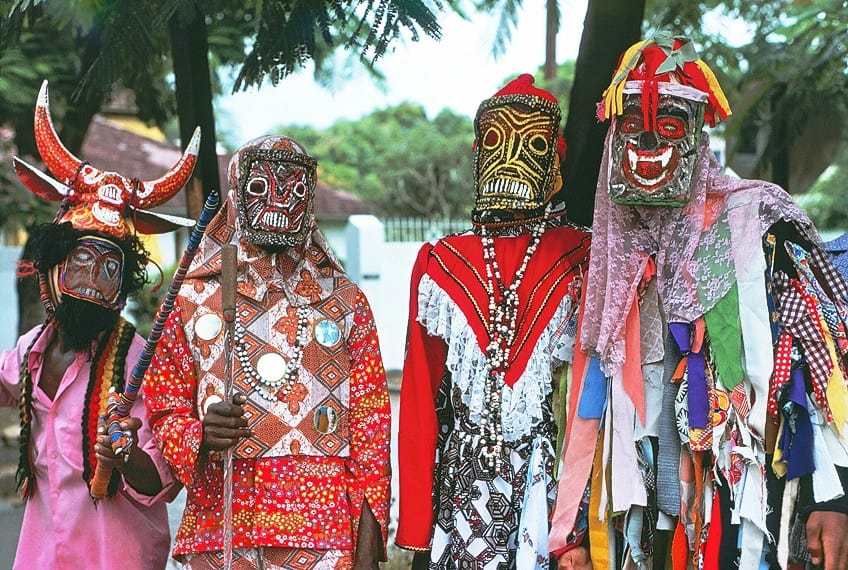
Lighting and Atmosphere
The quality of light and the time of day significantly impacts how colors appear in photographs. The warm, soft light of golden hour can transform landscapes and portraits into enchanting scenes, while the cooler tones of twilight or the stark contrast of midday sun can evoke entirely different moods and emotions.
Photographs often plan their shoots around the specific qualities of light to capture colors at their most captivating.
Post-Processing and Digital Enhancement
In the digital age, post-processing techniques have provided photographers with additional tools for fine-tuning colors, adjusting contrasts, and enhancing the visual impact of their images. While this does offer creative freedom to photographers looking to take their works further, it also underscores the importance of maintaining the authenticity of the moment being captured. Balancing the enhancement of images with the representation of reality is an ethical responsibility for photographers. Color is the bridge that connects the artist’s vision with the viewer’s emotions.

Primary colors and their endless variations serve as the building blocks of this language, allowing photographers to craft images that resonate deeply with their audience. Whether it is the careful selection of a single accent color, the harmonious blending of analogous hues, or the strategic use of complementary colors to create dynamic contrast, color in photography remains a dynamic and multifaceted tool of visual storytelling. Understanding these characteristics empowers photographers to communicate their artistic vision, sparking connections that transcend the boundaries of language and culture. Ultimately, color transforms a photograph into a work of art that speaks to the heart and soul of those who behold it, leaving an unmistakable mark on the canvas of human perception.
Different Types of Color Photography
Color photography is a mesmerizing art form that has evolved over the years, offering a wide spectrum of styles and techniques that allow photographers to express their creativity and convey a myriad of emotions. From vibrant and saturated hues to subtle and muted tones, the world of color photography is a kaleidoscope of possibilities.
In this exploration, we will journey through various types of color photography, each with its unique characteristics and the stories it tells.
Vibrant and Saturated Colors
Vibrant color photography is a celebration of intense, bold hues. Photographers who favor this style often use high saturation to create eye-catching, dynamic images. This type of photography is commonly associated with advertising and fashion, as it draws attention and elicits excitement. The vibrancy of colors in these images can convey energy, enthusiasm, and a sense of playfulness. Whether it is a rich red dress against a blue sky or a vivid bouquet of flowers, vibrant color photography is all about making colors pop and leave a lasting impression.

Pastel and Soft Tones
In contrast to vibrant colors, pastel and soft-tone photography is characterized by gentle, muted colors. This style creates a sense of calm, serenity, and nostalgia. Photographers often use pastel tones to evoke a dreamy, romantic atmosphere. Pastel images may feature soft pinks, blues, or lavenders, lending a subtle and delicate quality to the subject matter.
Whether capturing a quiet beach scene at dawn or a portrait with a vintage, timeless feel, pastel and soft-tone photography invites viewers to slow down and immerse themselves in the tranquility of the moment.
High-Contrast and Dynamic Range
High-contrast color photography explores the interplay between deep shadows and bright highlights. Photographers in this category often seek to create bold and dramatic images that draw the eye with their dynamic range. By accentuating the contrast between colors, these images can evoke a strong sense of mood, emphasizing the drama of the subject matter. Whether it is a striking silhouette against a vivid sunset or the intricate interplay of light and shadow in an urban landscape, high-contrast color photography offers a powerful visual experience.
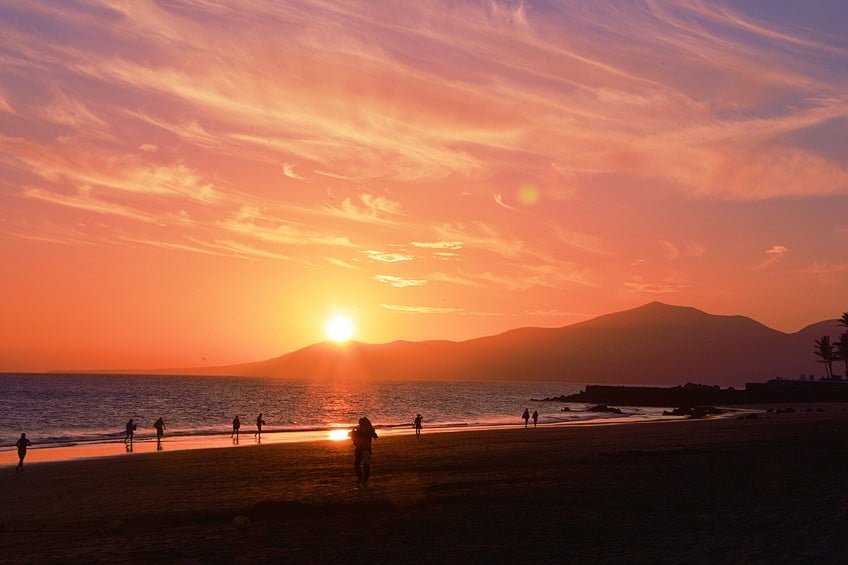
Cross-Processing
Cross-processing is a technique where film is developed in chemicals intended for a different type of film, resulting in unpredictable and often surreal color shifts. This process is known for producing images with unusual and intriguing color combinations. Cross-processed images might feature intense blues and greens or striking shifts in skin tones, creating a distinctive, otherworldly feel.
Photographers who embrace cross-processing often value the element of surprise and a departure from conventional color palettes.
Monochromatic or Selective Color
Monochromatic or selective color photography involves presenting an image primarily in black and white with a specific element or area rendered in color. This technique highlights and isolates the subject, drawing attention to it amidst a sea of grayscale. It creates a striking contrast that allows the viewer to focus on the color element, emphasizing its significance within the frame. For example, a photograph of a person holding a red umbrella in a black-and-white cityscape can tell a compelling story, emphasizing the individual or the element of protection against the monochromatic backdrop.
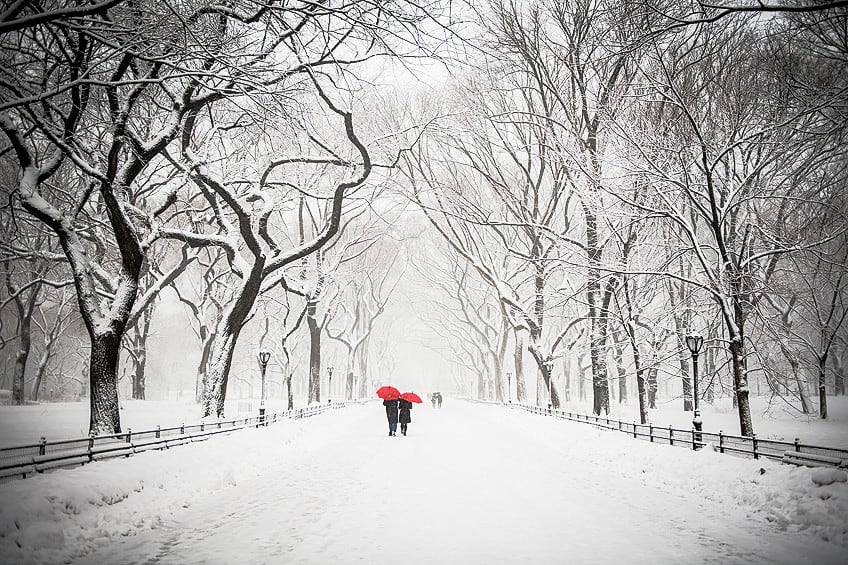
Nature and Landscape Photography
Nature and landscape photography often showcases the natural world’s vibrant colors. From the rich greens of lush forests to the brilliant blues of clear skies and pristine waters, this genre seeks to capture the beauty and diversity of the earth’s landscapes.
It is a celebration of the world’s breathtaking color palettes, conveying a sense of awe, serenity, and a connection to the natural environment.
Street and Urban Photography
Street and Urban photography thrive on the dynamic and often contrasting colors of city life. The streets are a vibrant tapestry of cultures and human expression, and this genre aims to capture the energy and diversity of urban environments. Street photography can feature vivid street art, colorful marketplaces, or the interplay of neon signs against the night sky. It tells the stories of city life, human connections, and the ever-changing urban landscape.

Portrait Photography
Portraits are a canvas for exploring the rich tapestry of human skin tones and expressions. Portrait photographers often aim to capture the nuances of their subjects’ personalities and emotions. They play with a range of color temperatures, from warm, golden-hour light that imparts a sense of intimacy to cooler, soft tones that create a calm and timeless mood. Each portrait is a journey into the world of color that reflects the essence of the person before the lens. Color photography is an artistic playground that offers photographers an array of styles and techniques to explore.
Whether it is the bold and vibrant colors of high fashion, the dreamy softness of pastel tones, the dramatic contrast of high dynamic range, or the surreal allure of cross-processing, each type of color photography provides a distinct visual language.
These styles not only allow photographers to convey their artistic vision but also engage viewers on an emotional and narrative level. Color in photography is a dynamic and versatile tool that transforms a simple image into a vivid, evocative story, inviting us to explore the world in a myriad of shades and emotions.
How to Use Color to Create Visually Astonishing Photographs
The strategic use of color is a potent tool for photographers to capture attention, convey emotions, and tell captivating stories. The mastery of color requires not only an understanding of the color wheel but also a keen sense of aesthetics and composition. In this exploration, we unveil the secrets of using color to create visually stunning photographs.

Understand the Color Wheel
To wield color effectively, one must first understand the color wheel. The color wheel is a visual representation of the relationships between primary, secondary, and tertiary colors. Primary colors, such as red, blue, and green, are the building blocks. Secondary colors, like yellow, orange, and purple, result from mixing two primary colors. Tertiary colors are achieved by mixing primary and secondary colors.
Understanding these relationships enables photographers to create harmonious or contrasting color schemes, setting the stage for captivating images.
Identify Key Colors
The first step in creating visually astonishing photographs is to identify key colors within the scene. Observe the dominant, secondary, and accent colors. Dominant colors are the most prominent and set the tone for the image, while secondary colors support and complement them. Accent colors add visual interest and can draw the viewer’s attention to specific elements within the frame.

Use Color to Evoke Emotions
Color has a profound impact on emotions. Red, for example, can convey passion, energy, or urgency. Blue represents calm, serenity, and depth. Green symbolizes growth, renewal, and harmony. By harnessing the emotional power of color, photographers can create images that resonate with viewers on a deeply emotional level.
Consider using warm colors like red and orange for images that exude energy and vibrancy, while cool blues and greens are perfect for conveying a sense of calm and tranquility.
Embrace Contrast and Complement
One of the most powerful techniques in color photography is using contrast and complementary colors. Contrasting colors, such as red and green or blue and orange, create visually striking combinations that immediately grab the viewer’s attention. Complementary colors are opposite each other on the color wheel and, when used together, create a vibrant and dynamic visual impact. For example, a subject wearing a red garment against a green background can create a captivating contrast.

Create a Focal Point
Strategic use of color can serve as an effective focal point in your photographs. By isolating a specific object or area in a striking color against a more subdued background, you draw the viewer’s eye to that point of interest.
Whether it is a red door in a monochromatic alley or a colorful flower in a field of green, creating a focal point with color ensures that viewers immediately connect with the subject.
Harmonize With Nature
In outdoor photography, nature provides an abundant palette of colors. From the rich greens of forests to the golden hues of a sunset, nature’s colors can be both a source of inspiration and a means of harmonizing the elements within your frame. The natural world offers a wealth of opportunities to create visually astonishing photographs, with color as your guide.
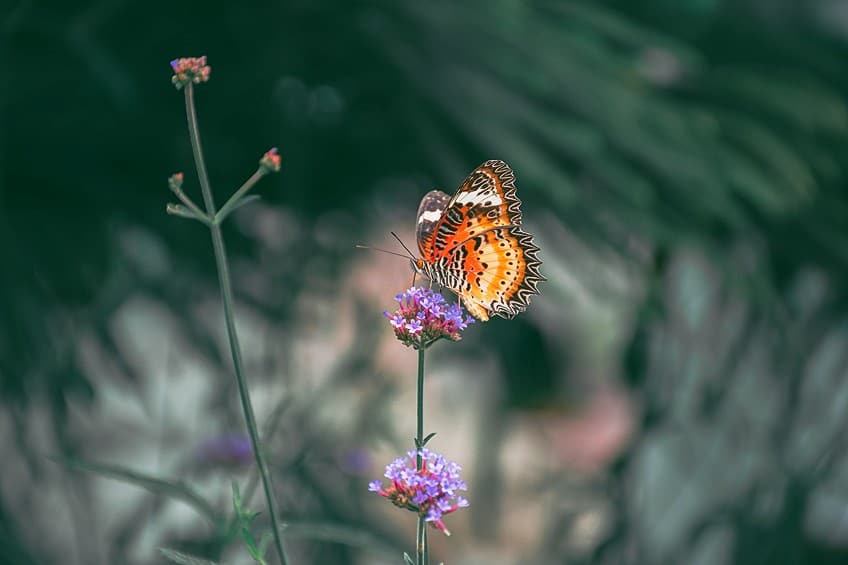
Experiment With Light and Shadow
The interplay of light and shadows can have a profound effect on how colors appear in your photographs. The quality of light during different times of the day and the direction of light can alter the way colors are perceived. The warm, golden light of sunrise and sunset can intensify the richness of colors, while the stark contrast of midday sun can create dramatic shadows and highlights.
Experimenting with the interplay of light and shadows allows you to capture colors in their most astonishing and evocative forms.
Post-Processing Techniques
In the digital age, post-processing techniques enable photographers to fine-tune colors, enhance contrasts, and manipulate the visual impact of their images. Software tools offer a wide range of possibilities for color correction and enhancement. However, it is crucial to use these tools judiciously, ensuring that the final image maintains its authenticity and represents the true essence of the moment.

Consider Cultural Significance
Different cultures attach diverse meanings to color, and these associations can influence the interpretation of your photographs. Be mindful of cultural nuances and symbolism when using color in your work. What may be a joyful and vibrant color in one culture can represent mourning or sadness in another.
Understanding these connotations ensure that your images convey the desired message to a global audience.
Tell a Story
Ultimately, color in photography is a storytelling tool. Whether you are capturing the vivid colors of a bustling market or the subdued tones of a contemplative portrait, color enriches your narrative. It conveys the mood, sets the atmosphere, and connects the viewers to the emotions and stories within the frame.
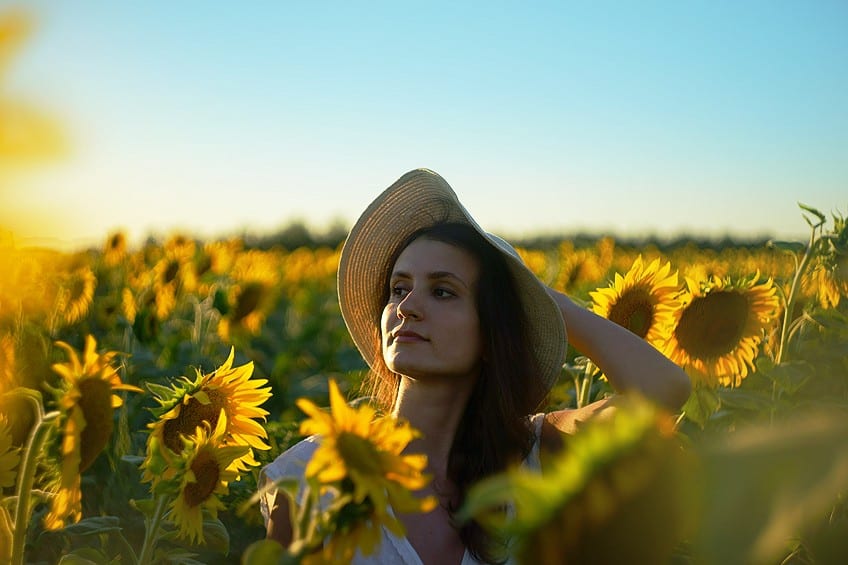
Understanding the color wheel, identifying key colors, and knowing how to evoke emotions are essential elements of this craft. By embracing contrast, creating focal points, harmonizing with nature, experimenting with light and shadows, and considering cultural significance, photographers can master the art of color in their work. Ultimately, it is the power of color that can elevate an image from ordinary to extraordinary, allowing photographers to connect with their viewers on a profound and emotional level. In the hands of a skilled photographer, color becomes a brush with which to paint the visual symphony of life.
Frequently Asked Questions
What Is Color in Photography?
Color in photography is a significant facet of the medium, as it can convey emotions, create mood, and tell compelling stories. It adds depth and visual interest to images, making them more engaging and impactful.
How Can I Make Specific Colors Stand Out in a Photograph?
To make specific colors stand out, you can use the principles of contrast and complementary colors. Isolate the color you want to emphasize against a contrasting background, and it will naturally draw the viewer’s attention.
Is It Better to Capture Colors In-Camera or Enhance Them in Post-Processing?
The approach depends on the photographer’s style and intent. Some photographers prefer to capture colors as accurately as possible in-camera, while others use post-processing to enhance or manipulate colors for creative effect. The choice depends on the desired outcome.
Duncan completed his diploma in Film and TV production at CityVarsity in 2018. After graduation, he continued to delve into the world of filmmaking and developed a strong interest in writing. Since completing his studies, he has worked as a freelance videographer, filming a diverse range of content including music videos, fashion shoots, short films, advertisements, and weddings. Along the way, he has received several awards from film festivals, both locally and internationally. Despite his success in filmmaking, Duncan still finds peace and clarity in writing articles during his breaks between filming projects.
Duncan has worked as a content writer and video editor for artincontext.org since 2020. He writes blog posts in the fields of photography and videography and edits videos for our Art in Context YouTube channel. He has extensive knowledge of videography and photography due to his videography/film studies and extensive experience cutting and editing videos, as well as his professional work as a filmmaker.
Learn more about Duncan van der Merwe and the Art in Context Team.
Cite this Article
Duncan, van der Merwe, “Color in Photography – The Palette of Pixels.” Art in Context. November 20, 2023. URL: https://artincontext.org/color-in-photography/
van der Merwe, D. (2023, 20 November). Color in Photography – The Palette of Pixels. Art in Context. https://artincontext.org/color-in-photography/
van der Merwe, Duncan. “Color in Photography – The Palette of Pixels.” Art in Context, November 20, 2023. https://artincontext.org/color-in-photography/.





